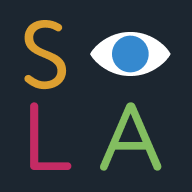You can see the Copyright Office’s document by clicking http://copyright.gov/orphan/reports/orphan-works2015.pdf.
Please take a moment to read the ASIP Reply Comment to the Copyright Office for the Notice of Inquiry on Visual Art. The deadline to act is OCTOBER 1, 2015.
Here are the basic facts:
- “The Next Great Copyright Act” would replace all existing copyright law.
It would void our Constitutional right to the exclusive control of our work.
It would “privilege” the public’s right to use our work.
It would “pressure” you to register your work with commercial registries.
It would “orphan” unregistered work.
It would make orphaned work available for commercial infringement by “good faith”
infringers.
It would allow others to alter your work and copyright these “derivative works” in their
own names.
It would affect all visual art: drawings, paintings, sketches, photos, etc.; past, present
and future; published and unpublished; domestic and foreign.
Background
The demand for copyright “reform” has come from large Internet firms and the legal scholars
allied with them. Their business models involve supplying the public with access to other
people’s copyrighted work. Their problem has been how to do this legally and without paying
artists.
The “reforms” they’ve proposed would allow them to stock their databases with our
pictures. This would happen either by forcing us to hand over our images to them as registered
works, or by harvesting unregistered works as orphans and copyrighting them in their own
names as “derivative works.”
The Copyright Office acknowledges that this will cause special problems for visual artists but
concludes that we should still be subject to orphan works law.
The “Next Great Copyright Act” would go further than previous Orphan Works
Acts. The proposals under consideration include:
1.) The Mass Digitization of our intellectual property by corporate interests.
2.) Extended Collective Licensing, a form of socialized licensing that would replace voluntary
business agreements between artists and their clients.
3.) A Copyright Small Claims Court to handle the flood of lawsuits expected to result from
orphan works infringements.
